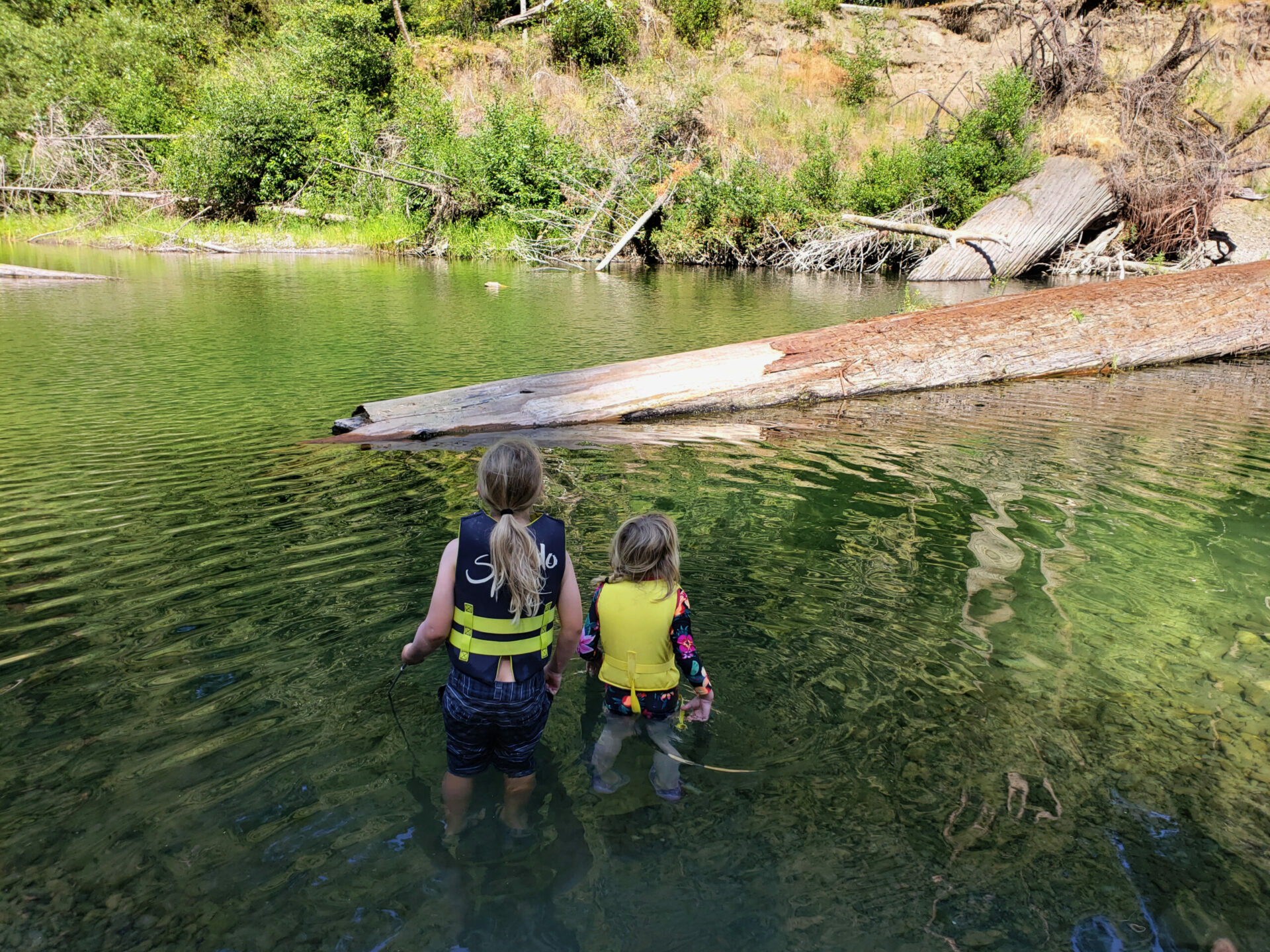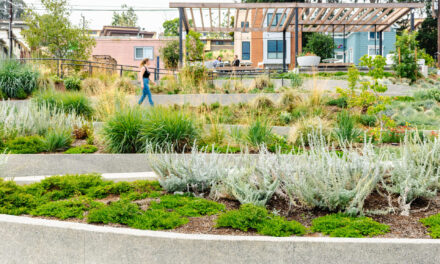Homegrown Go-Tos for Chillin’
Summer heatwaves often find my daughter and I retreating from our non-air-conditioned home to find somewhere to swim — the local public pool, a river, the ocean. But when we can’t go swimming, I get creative. I have always overheated easily, so I have been building my arsenal of cooling methods since childhood: early techniques included dunking my head under a faucet so my hair gets wet, spritzing my skin with a spray bottle, and keeping a baggie full of wet bandannas so I’ll always be able to put around my neck. As an adult, traveling through hot countries, I learned that wetting all of my clothes worked even better than the spritzing and head dunking. On particularly hot days, I’ve been known to step into a shower fully clothed: it looks silly, but keeps me comfortable.
During a recent hot spell, my eight-year-old and I spent the day in a shallow, inflatable pool that had an air leak and required frequent re-inflating. It didn’t look like a spread in Sunset magazine, but we had a great time — we rescued countless grasshoppers and discovered that a balloon pump makes a fun water gun. When I got out, I also realized that my long-sleeved swimsuit kept me cool far longer than any cotton t-shirt ever had; something about the fabric retained the moisture so well that by evening I found myself actually feeling chilly even though it was still nearly 90 degrees out. When bedtime rolled around in our still-toasty cabin, my kiddo could not get comfortable until finally I gave her an ice pack for her neck and spread a dampened, light muslin blanket over her so it touched as much skin as possible. She fell right to sleep.
As weather extremes become more common, I realize that sharing experiences like these can literally be lifesaving, so I asked some of my friends what their homegrown stay-cool methods are. This is what they told me:
“When we lived in Iowa, my mom used to keep 4-6 inches of water in the bathtub and get into it every couple of hours and lie there ‘til her body temp came down; she’d splash it over her body, then dry off and put minimal light clothing back on.” —Claire McGuire
“Windows open at night; close it all up and live in the dark during the heat of the day. My mom used to hang blankets over the windows to help insulate the house.” —Kim Knapp
“We cook with an air fryer oven in the garage or use a camping stove outside. That said, I just burnt my fourth batch of beans, so I’m not sure I fully recommend this approach—but it does keep the house cooler. I also sometimes spray the roof to get some evaporative cooling in the attic, and I usually manage to spray the kids while I’m at it. And a sprinkler under the trampoline is pretty much our go-to for the kids.” —Carrie Ashendel
“I have a little electric fan on a clipboard on my bed blowing on my face and head all night. And cooling/medicated powder on my neck and inner elbows where I tend to get heat rash.” —Marit Erickson
“Do all of the above while you’re organizing for civil disobedience and non-violent direct action to decrease greenhouse gas emissions. The USA is literally killing everyone as the number one polluter on the planet.” —Jennifer Shulzitski
Other Recent Posts
Gleaning in the Giving Season
The practice of collecting food left behind in fields after the harvest is good for the environment and gives more people access to produce.
New Study Teases Out Seawall Impacts
New models suggest that sea walls and levees provide protection against flooding and rising seas with little effect on surrounding areas.
Oakland High Schoolers Sample Local Kayaking
The Oakland Goes Outdoors program gives low-income students a chance to kayak, hike, and camp.
Growing Better Tomatoes with Less Water
UC Santa Cruz researchers find the highly-desired ‘Early Girl’ variety yields more tomatoes under dry-farmed conditions.
Santa Clara Helps Homeless Out of Harm’s Way
A year after adopting a controversial camping ban, Valley Water is trying to move unsheltered people out of the cold and rain.
The Race Against Runoff
San Francisco redesigns drains, parks, permeable pavements and buildings to keep stormwater out of the Bay and build flood resilience.
Learning the Art of Burning to Prevent Wildfire
In Santa Rosa’s Pepperwood Preserve, volunteers are learning how controlled fires can clear out natural wildfire fuel before it can spark.
Martinez Residents Want More Than Apologies — They Want Protection
After a 2022 release of toxic dust and a February 2025 fire, people in the northeast Bay town are tired of waiting for safety improvements.
Weaving Fire Protection Out Of What’s Already There
A new Greenbelt Alliance report shows how existing vineyards, grasslands, and managed forests can slow wildfire and save vulnerable homes.
Fall Plantings Build Pollinator Habitats in Concord
Community groups, climate advocates and a church are coming together to plant pollinator gardens as monarchs, bees see population declines.










